Similes and Metaphors Teaching Resources
Make teaching similes and metaphors a walk in the park this school year with printable worksheets, activities, and more teaching resources designed to engage your primary students!
Created by teachers and rigorously reviewed by the expert teacher team at Teach Starter, each printable and digital resource in this similes and metaphors teaching collection is ready for you to download and use in your classroom with editable options for easy differentiation.
Teaching poetry this month, or exploring the various meanings of words and phrases as part of your literacy standards? You'll find curriculum-aligned activities to help students understand the meaning of metaphors, task cards and games to differentiate between metaphor, simile, and other forms of figurative language, and more!
New to teaching this part of the English curriculum or just looking for a quick reminder? Read on for a how-to guide from the teachers of Teach Starter!
Similes vs. Metaphors: What's the Difference?
What's the difference between a simile and a metaphor? It's a question we hear all the time from our students. These two figures of speech have a lot in common.
Both can be used by writers to add colour and interest to our communication, and both are often used in poetry and prose to describe emotions, experiences, and objects. Is it any wonder students often mix them up?
Here's how we suggest you outline their distinct differences for your students so they can tell if a writer has used a simile or a metaphor and which one they are using in their own writing.
What Is a Simile?
At its most basic, a simile can be defined for kids as a figure of speech that compares two things using the words 'like' or 'as' in order to make a descriptive connection.
What Is a Metaphor?
A metaphor is a figure of speech in which a word or phrase is applied to an object or action to which it is not literally applicable. For example, take a look at the sentence, 'She has a heart of stone.' This is an example of a metaphor, and we can tell because the comparison is implicit.
The words 'heart of stone' are being used to describe the person's personality or emotions, because of course their actual physical heart is made of tissue and muscle!
Bottom line: Similes use the words 'like' or 'as' to make comparisons, while metaphors make implicit comparisons.
Metaphor Examples for Students
Digging deeper, it can be helpful for students to have examples of each of these figures of speech to make the concept more tangible in your lessons. We've already used 'a walk in the park,' and there are plenty more metaphor examples to use in the classroom to help students better understand this form of figurative language.
Try a few favourites from our Teach Starter teacher team to start the classroom conversation!
- Cristina said the maths test was a piece of cake.
- My class was a zoo with the relief teacher yesterday!
- The cat was a shadow, slinking down the dark alley.
- There was a sea of people at the museum during the field trip.
Simile Examples for Students
As already mentioned, similes use 'like' or 'as' to make comparisons between two things. Here are a few kid-friendly simile examples that you can use with your class to explain how this shows up in writing:
- Our teacher asked us to be quiet as mice while we were taking a test.
- The ice cream was as cold as snow.
- The star rugby player runs like a cheetah.
- We jumped like kangaroos during our brain break.
- Free Plan
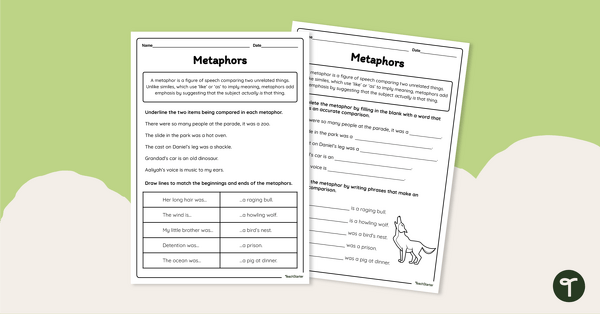
Metaphors Worksheet
Practise identifying and using metaphors with this differentiated metaphors worksheet.
- Plus Plan
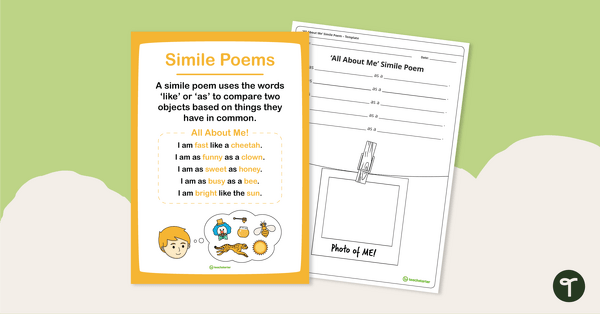
All About Me! - Simile Poem Template & Poster
Get to know your students and explore simile poems at the same time with this All About Me Simile Poem Template and Poster.
- Plus Plan
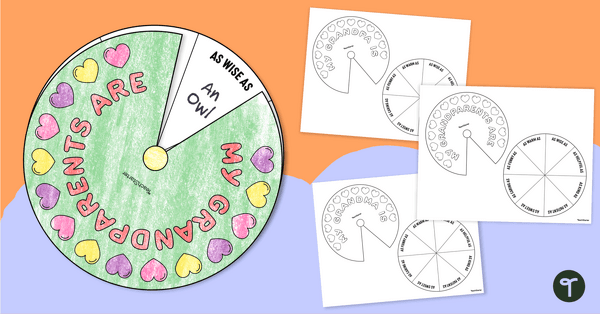
Grandparents' Day Activity - Simile Spinner Craft
Show Grandma and Grandpa how awesome they are with a Grandparents’ Day Craft filled with super similes!
- Plus Plan
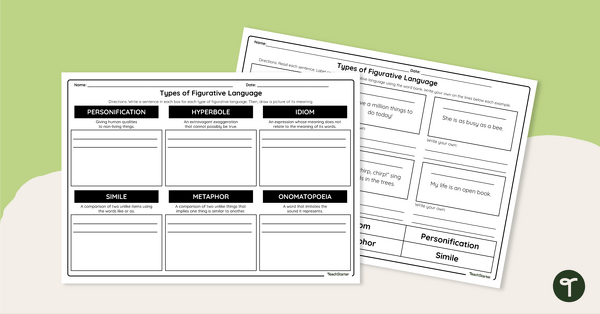
Types of Figurative Language - Worksheet
Practise identifying and creating examples of figurative language with this printable worksheet.
- Plus Plan

Simile and Metaphor Self-Portrait Worksheet
Teach students about similes and metaphors by asking them to describe... themselves!
- Plus Plan
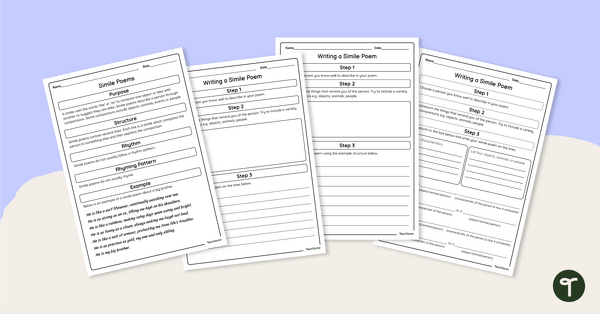
Writing a Simile Poem - Worksheet
Experiment with similes by writing a simile poem about a special person.
- Plus Plan
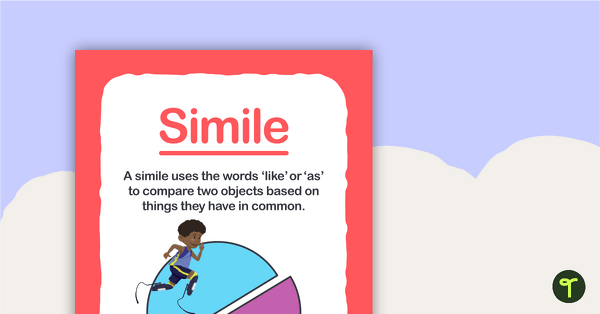
Similes Poster (Early Years)
Show your students an example of a simile using this colourful classroom display poster.
- Plus Plan
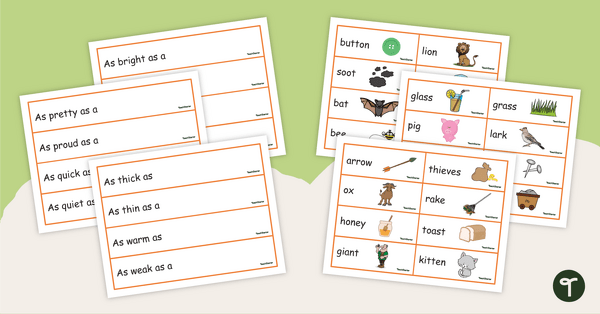
Similes Matching Game
Use this similes game to introduce your students to some of the most common similes used in the English language.